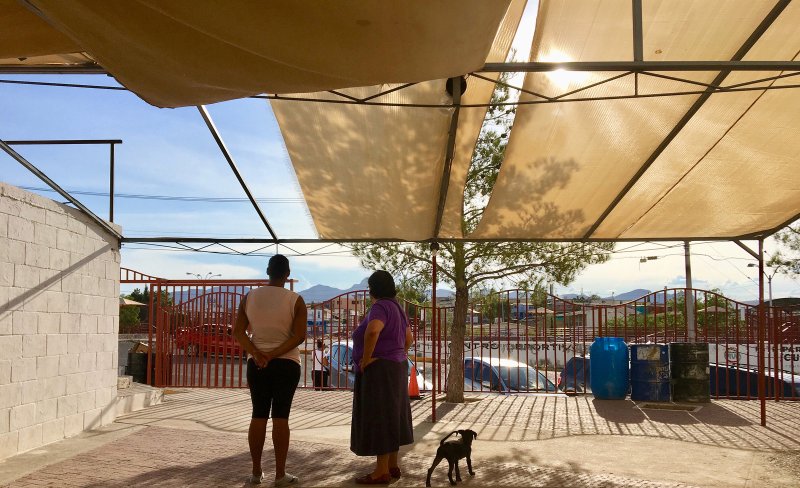Lily Moore-Eissenberg, a religion fellow at the Pulitzer Center on Crisis Reporting, writes in TIME magazine about the hundreds of leftist Catholic nuns who have made their way to the U.S.-Mexico border to help migrants seeking asylum. Many of the nuns experienced life under Central American dictatorships in the 1980s and now dedicate their lives to working toward economic and social equality.
“Nuns have traditionally enjoyed very little formal power in the Catholic Church…But they have become some of Catholicism’s most vigorous, progressive, and accessible representatives on the ground.”
On a sweltering morning in August, Sister Maria Antonia Aranda, a 60-year-old nun from Mexico, navigated her silver Ford Escape into a border checkpoint in Ciudad Juárez. She was dropping off two asylum-seekers who had hearings across the border that day, at the federal immigration court in El Paso. Fatima Rodriguez, a 19-year-old from Nicaragua who had been separated from her 5-year-old daughter by American authorities, anxiously texted her lawyer from the passenger seat. Her companion, a Salvadoran woman in her early 20s, sat in the back seat, adjusting and re-adjusting her waist-length hair. Her eyelids shone with silver glitter, a special touch for the occasion.
After Aranda parked, they all paused for a moment, as if to draw a collective breath. Then, at Aranda’s signal, they got out, walked to the entrance of the Lerdo International Bridge, and kissed each other’s cheeks. Aranda watched as the two young women each fed ten pesos—fifty American cents, the toll to cross by foot—into a turnstile. Within seconds, they disappeared into the crush of pedestrians bound for the U.S. Aranda hoped to God she would never see them again.
Over the past three years, priests, bishops, and Pope Francis have condemned U.S. immigration policy under the Trump Administration and entreated Catholics around the world to stand up for the rights of migrants. But along the U.S.-Mexico border, it’s women like Aranda—leftist Catholic nuns, most of them middle-aged or elderly and many of them first- or second-generation Americans—who have actually built a mass movement.





